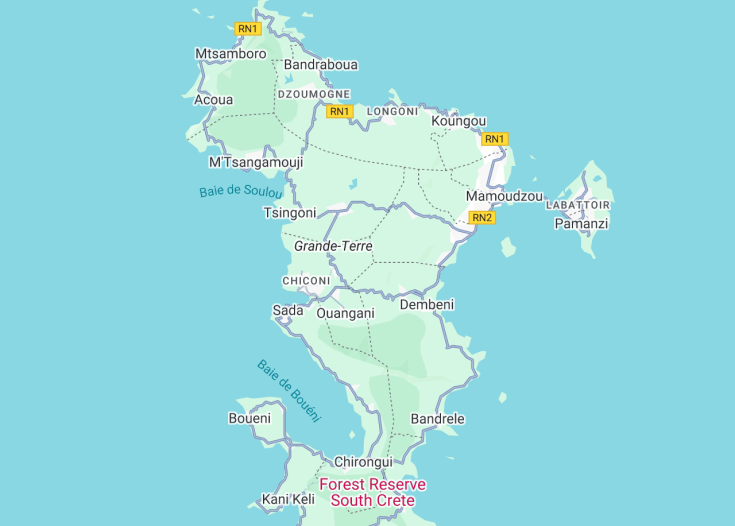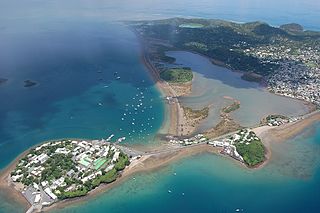Mayotte, an overseas department of France, is an archipelago situated between the northern coast of Madagascar and the Mozambican mainland. Its unique geology has given rise to a staggering double barrier reef, making it the third-largest coral atoll globally. Awash in rich marine biodiversity, Mayotte’s crystal-clear lagoons are a haven for snorkelers and divers. The island’s lush landscapes, peppered with Baobab trees and hosting various endemic species, provide a vibrant juxtaposition to its vibrant underwater realms.
Always respect local customs; Mayotte has a predominantly Muslim population, so consider dressing modestly.
Engage with local eco-tours, ensuring sustainable practices while discovering Mayotte’s hidden treasures.
Mayotte: jewel of the Indian Ocean
| Capital | Mamoudzou |
| Time in Mayotte | GMT+3 |
| Language spoken | French (official), Shimaore (widely spoken) |
| Population | Approximately 270,000 (Source: INSEE, 2022) |
| Religion | Islam (97%) Christianity (2%) Others (1%) |
| Currency | Euro (€, EUR) |
| Airports | Dzaoudzi–Pamandzi International Airport |
Mayotte, a shimmering jewel in the Indian Ocean, is a fusion of cultures, rich history, and nature’s marvels. This archipelago, ensconced between Madagascar and the coast of Mozambique, weaves a tapestry of tales spanning centuries, from sultanates to colonial legacies.
Its history is as vibrant as its coral reefs. Once under the reign of local sultans, Mayotte witnessed numerous skirmishes for dominance. Later, as a French colonial possession, it integrated more deeply with global currents, eventually choosing to remain with France as a department in 2009. Such a layered past enriches the experience of every visitor, where every stone and shore has a story to tell.
But history is just one facet of Mayotte’s allure. Nature has been exceedingly benevolent to this island paradise. The expansive lagoons that surround Mayotte are among the world’s largest and are sanctuaries for diverse marine life. From migrating whales to playful dolphins, the waters around Mayotte brim with wonders.
For the discerning traveler, Mayotte offers both tranquillity and adventure. The beaches, with their powdery sands, are ideal for relaxation, while the dense forests beckon the explorers. The local culture, a mélange of African, Arab, and French influences, manifests in music, dance, and cuisine, offering a sensory extravaganza to every visitor.
Where is Mayotte located?
Mayotte is an archipelago situated in the Indian Ocean, nestled between the northeastern coast of Mozambique and the northwestern coast of Madagascar. It is an overseas department and region of France.
What is Mayotte famous for?
Mayotte is renowned for its vast lagoons, vibrant coral reefs, and rich marine biodiversity, including whales and dolphins. The island’s unique blend of cultures, marked by African, Arab, and French influences, also distinguishes its traditions, music, and cuisine.
History
Pre-16th Century: Early Settlements
The history of Mayotte, an island in the Comoros Archipelago situated in the Indian Ocean between Madagascar and Mozambique, dates back several centuries with early settlements likely originating from various East African communities. Bantu-speaking tribes were among the first to settle the area, followed by a gradual influx of Islamic influence through traders and missionaries.
1500–1841: European Discovery and Influence
The Portuguese were the first Europeans to discover the island in the early 16th century. Though the island was not immediately colonized, its existence became widely known to European traders. Over the next few centuries, various European powers, including the British and the French, vied for control of the Comoros Archipelago, which includes Mayotte. The island became a strategic stopover for ships traveling between Europe, Asia, and Africa.
1841–1912: French Colonization
In 1841, Mayotte was officially acquired by France after a treaty was signed with the local sultan. The island became a French colony and was exploited for its natural resources, particularly vanilla and ylang-ylang, an essential oil. Slavery was practiced during this period, and many locals were enslaved and sent to other colonies like Reunion. France officially abolished slavery in 1848, and the island underwent social and economic transformations.
1912–1974: Economic Development and Political Changes
In 1912, Mayotte, along with the other Comoros islands, was officially designated as a French Overseas Territory. This led to significant investments in infrastructure and public services. Education and healthcare systems were developed, and Mayotte experienced moderate economic growth. Political changes were afoot as well, and talks of independence for the Comoros began to circulate.
1974–Present: Referendums and Modern Governance
In 1974, a referendum for independence was held across the Comoros Archipelago. While the other islands voted in favor, the majority of Mayotte’s population chose to remain with France. As a result, Mayotte became a French “collectivité territoriale.” Another referendum in 2009 further cemented its status as an overseas department of France. It has since been integrated into the French legal and social welfare systems, and its residents are French citizens. The island has seen substantial improvements in its infrastructure, healthcare, and education, but also faces challenges such as illegal immigration and economic disparities. Today, Mayotte continues to grapple with its dual identity as both a unique cultural melting pot and an integral part of France.
Visit Mayotte
What to see and do in Mayotte
Mayotte offers a range of attractions and activities for visitors to enjoy. Here are some of the must-see and must-do experiences in the island:
- Explore the stunning beaches of Mayotte, such as Plage de Saziley and Plage Moya, known for their pristine white sand and crystal-clear waters.
- Snorkel or dive in the Mayotte Barrier Reef, one of the largest coral reef systems in the world, teeming with marine life.
- Visit the Coelacanth Marine Park, a protected reserve home to a unique variety of marine species, including the rare and prehistoric coelacanth fish.
- Discover the traditional villages of Mayotte, where you can experience the local culture, taste traditional cuisine, and interact with the friendly residents.
- Take a boat tour to explore the surrounding islands, such as Petite-Terre and Bambo Est, known for their scenic landscapes and diverse wildlife.
These are just a few highlights of what Mayotte has to offer. Whether you’re a nature lover, an adventure seeker, or a cultural enthusiast, Mayotte is sure to captivate you with its unique charm.
Events in Mayotte
Mayotte hosts various events and festivals throughout the year, showcasing its vibrant cultural heritage. Here are some notable events:
- Mayotte Day (April): This event celebrates the island’s culture, food, art, and music, offering a glimpse into the rich traditions and customs of Mayotte.
- Malango Festival (July): This music festival brings together local and international artists, showcasing the diversity of Mayotte’s music scene, from traditional Maloya to contemporary genres.
- Pilgrimage to Our Lady of Mayotte (August): This religious pilgrimage attracts thousands of devotees who gather to worship and pay homage to the Virgin Mary.
- Carnival du Sud (December to January): This lively carnival features colorful parades, traditional costumes, and music, creating a festive atmosphere for locals and visitors alike.
These events provide a unique opportunity to immerse yourself in Mayotte’s culture and join in the joyous celebrations that define the island.
Best time to visit Mayotte
The best time to visit Mayotte is during the dry season, which runs from May to November. During these months, the weather is generally pleasant, with lower chances of rainfall and more sunshine. It is also the peak tourist season, so you can expect more favorable conditions for outdoor activities and exploring the island’s natural attractions.
Is Mayotte worth visiting?
Mayotte is definitely worth visiting for those seeking a unique blend of African, Arab, and French cultures in a stunning natural setting. The island offers breathtaking beaches, vibrant marine life, and a rich cultural heritage. However, it is important to note that Mayotte also faces challenges such as poverty and unemployment, which may impact certain aspects of the tourist experience. Despite these challenges, Mayotte’s beauty and cultural richness make it a worthwhile destination for those looking to explore a lesser-known corner of France’s overseas territories.













